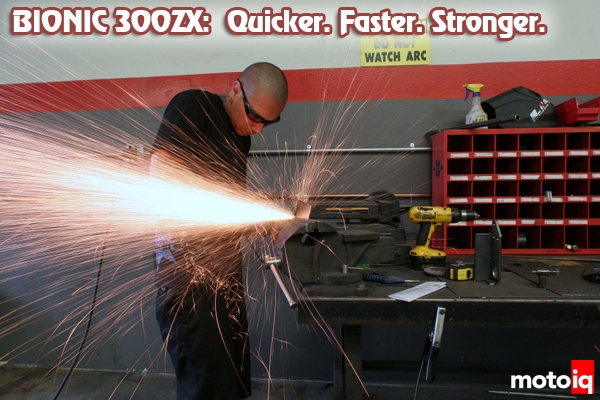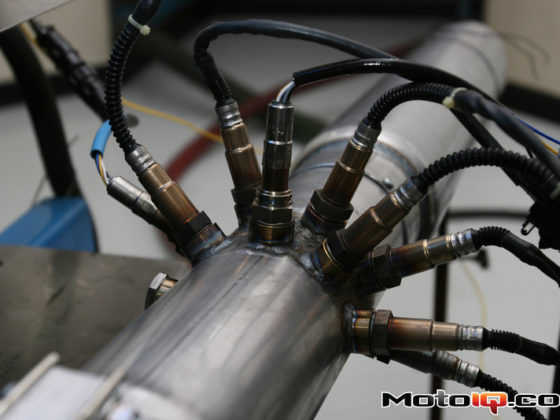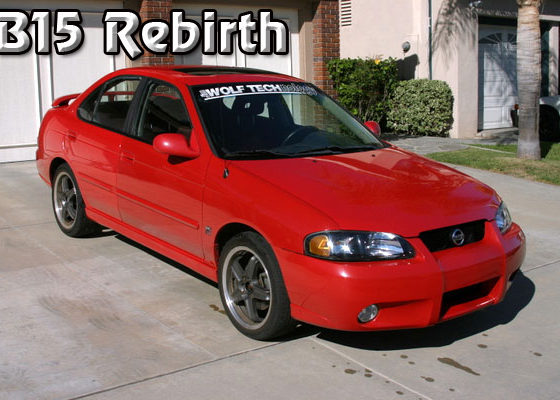,
All twin turbo Z’s imported to North America were equipped with T-Tops. T-Tops are great if you are suffering from a mid life crisis but they are heavy and suck for having a rigid chassis so they had to go. The difficult thing was that there were only a few naturally aspirated Z’s brought into the country with a hard top roof. Rumors had it that there were less than a couple dozen of these ever. The hard top roof was not available as a new part from Nissan either.
We scoured the junk yards for several months using all of our connections and the internet before we found a wrecked hardtop Z that we could clip the roof from. We ordered our clip and sent it and our car off to Performance Autobody in Torrance to have the hardtop roof spliced in place of our T-Top roof. We picked Performance because Nissan uses them to repair damaged vehicles for resale and we were very familiar with the quality of their work.
Performance cut the stock roof off at the factory seams and prepped the roof clip similarly, welding the two together at the factory splice points. Upon getting the car back, we could not tell where the splice was. This took about 60 lbs right off the top of the car where the weight hurt the most.
The next step was to build a roll cage to end all roll cages. Since our Z is being built for road racing and time attack, it is essential that we stiffen the body structure as much as we reasonably can. A stiff body helps make the cars suspension work much better as it helps ensure that bump loads are transferred into the suspension where they can be controlled by the dampers instead of flexing the chassis as a giant undamped spring. A stiff chassis means that the suspension is much more sensitive to tuning as well making the car much easier to set up. Since this is going to be a serious car with serious power, a strong cage is also important for safety.
| Louie Contreras ponders the upcoming job before starting |
Since the front of the Z’s unibody is notoriously weak and known to crack, we needed the cage to extend completely though the car making it a semi tube frame. To find a shop capable of building what we wanted competently took some doing. At the SEMA show while hanging around the circular bar at the Hard Rock Café we were introduced to Louie Contreras. The guys from Honda Tuner who were in the same general area said Louie is the best fabricator in Orange County. Louie invited us to his shop L-CON Fabrication after SEMA and we liked what we saw so we shipped Project Z to L-CON to begin the next phase of its existence.
| The rear hatch, windows and doors were removed to help access the interior of the car |
At L-CON, the engine was pulled out and the car pressure washed to assess what was needed. We were in constant contact with Louie and he was very thorough, contacting us every time a decision or a design detail needed discussion. Louie started by making cardboard templates for the floor plates and having them laser cut out of 0.125″ thick steel to his dimensions. The floor plates not only sat on the floor but also wrapped around the frame rails in three dimensions to fully couple the cage to the chassis and to make sure that the cage was attached to the strong parts of the unibody, not just the flimsy floor as is typical of cheap cage builders.
| First all of the tubing needed had to be procured and laid out in the approximate lengths needed for various parts of the cage |
Next, Louie mandrel bent the main cage tubes out of 1.75″ diameter, 0.095″ wall thickness DOM 1018 alloy mild steel. In steel terms DOM means drawn over mandrel. When DOM tubing is made, a flat sheet of steel is drawn into a tubular shape while cold over a mandrel and electrically seam welded to make a complete tube. This cold drawing makes the grain of the metal finer and gives it better mechanical properties. A cheaper form of mild steel tubing is called ERW which means electrical resistance welded. ERW tubing is hot rolled into tubular form and resistance welded. It does not get the grain refinement that cold worked tubes get and thus has worse mechanical properties. NASA, the racing sanctioning body we run with, does not allow ERW tubing for roll cages, another good reason to use DOM!
| After taking measurements the tubing was cut to the near net length needed |
Although mild steel does not sound as exotic as the higher strength chrome moly steel, it has several advantages for a roll cage. Chrome moly is steel with a high percentage of chromium and molybdenum. These elements impart superior mechanical properties including a 40% higher tensile strength than mild steel. The heat from welding weakens chrome moly more than mild steel. Chrome moly must be post weld heat treated to retain the same level of strength in the heat affected zone of the welds. Chrome moly tends to be more brittle in the zones around the weld. Chrome moly is also less ductile and tends to crack when its limits are exceeded. Mild steel however is less affected by the heat of welding and is more malleable.
What this equates to is a cage that can deform, bend and absorb energy better in a serious crash while staying together and not cracking apart. You may hear contrary opinions by other highly qualified fabricators but we feel that for us, mild steel is safer. Many race sanctioning bodies feel the same way and sometimes chrome moly is not allowed by the rules, a good reason to check the rulebook first before starting on a project.
| Measure twice, cut once, Louie double checks his measurements with the main hoop roughly bent for the other main tubes |
| The measurements are transferred onto the tubing while it sits in the hydraulic mandrel bender. |
The first bends are carefully made |
| Louie test fits the main hoop to see if it meets his standards for a tight fit. He bends the tubes a little at a time to get the bends just right for the snuggest possible fit |
| Louie tunes up his bends while fitting the main hoop |
| The main hoop is finally fitted, look how carefully it matches the lines of the body |
| Now its time to bend up the front legs, measure first |
| |
| The result is a nice tight fit |




1 comment
Pics not working 🙁